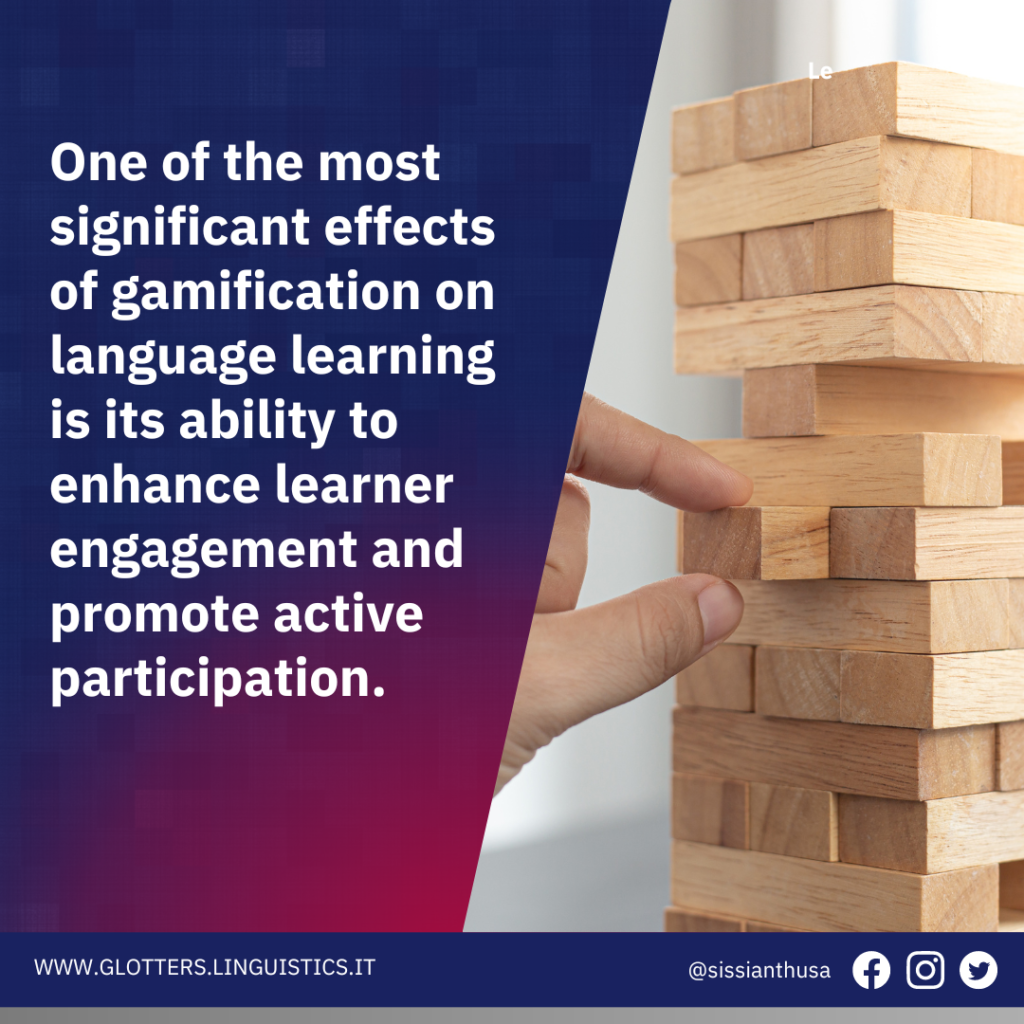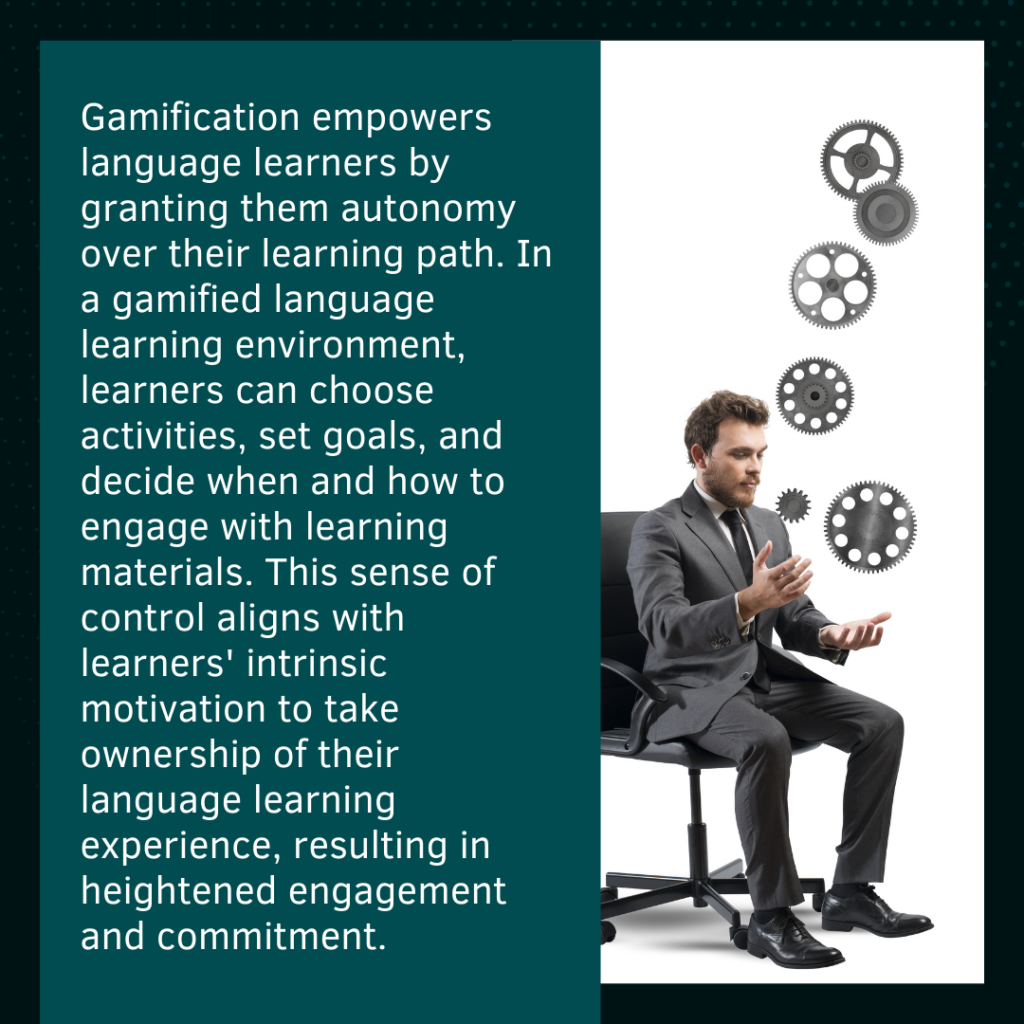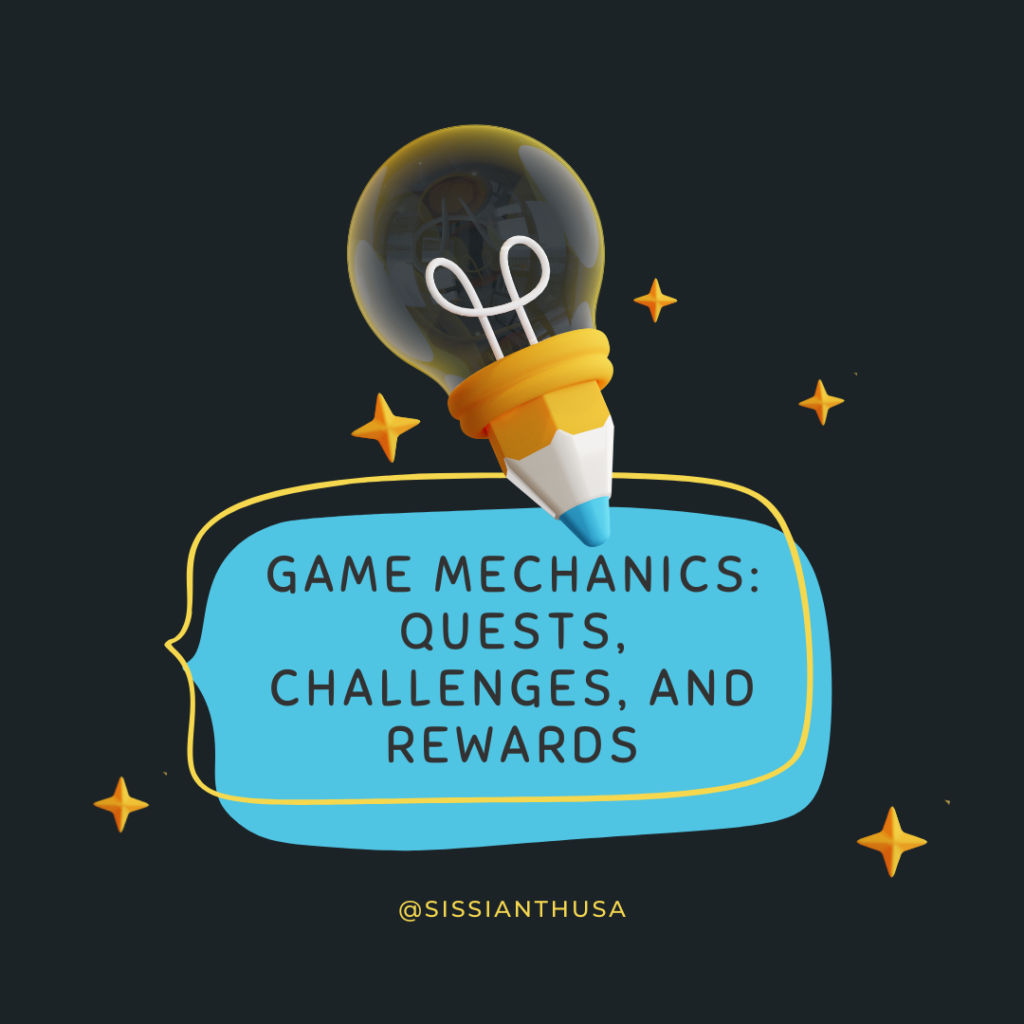The Power of Play for Linguistic Fluency
Within the realm of language education lies an innovative approach that brings the thrill of gaming and the power of learning into harmonious convergence. Gamification in language learning is not mere play; it is a strategic and captivating fusion of pedagogy and game design. By infusing language learning experiences with gaming elements, we create an immersive world where learners embark on thrilling quests to conquer new linguistic horizons.
Importance of Motivation in Language Learning
Language acquisition is a formidable expedition, demanding dedication and perseverance. Yet, motivation reigns as the beacon that guides learners through the darkest linguistic alleys. Unleashing the captivating force of gamification, motivation finds its rightful dwelling amidst interactive challenges, enticing rewards, and the pursuit of mastery. Armed with this newfound fervor, language learners transcend barriers and embrace the journey with unwavering enthusiasm.
This article ventures into the uncharted territory of gamification in language learning. Our quest is to uncover the cognitive alchemy behind this transformative approach—how it kindles a passion for learning, kindles curiosity, and ignites the flame of intrinsic motivation. To illustrate the boundless potential of gamification, we present a compelling case study—[Choose Your On Italian Adventure].
Effects of Gamification on Language Learning

One of the most significant effects of gamification on language learning is its ability to enhance learner engagement and promote active participation. Traditional language learning methods often struggle to maintain learners’ interest and enthusiasm over time. However, when language learning is gamified, it transforms into an interactive and immersive experience that captivates learners.
Gamified language learning platforms, such as interactive apps or gamebooks, create a sense of excitement and challenge through quests, puzzles, and storylines. Learners become active participants in their language journey, making choices that influence the course of the narrative or game. This level of interactivity compels learners to stay attentive, focused, and eager to progress, effectively reducing distractions and increasing study time.
Moreover, the element of competition, whether against oneself or others, further boosts engagement. Leaderboards, achievements, and rewards motivate learners to surpass their previous performance and strive for mastery. This competitive aspect of gamification nurtures a healthy drive to excel, ultimately leading to more profound language learning experiences.
Improved Retention and Application of Language Skills
Gamification enhances learners’ retention and application of language skills by embedding language learning content within meaningful contexts. Language use is integrated into the game’s challenges, quests, and dialogues, allowing learners to practice language skills in realistic scenarios. This practical application of language skills enhances memory retention and facilitates seamless transfer of knowledge to real-life situations.
As learners encounter language in context, they are more likely to recall vocabulary, grammar structures, and phrases with ease. Gamified language learning presents learners with repeated exposure to language content through various challenges, quests, and interactive tasks, reinforcing their understanding and mastery over time.
The interactive nature of gamification also encourages learners to experiment with language use without fear of making mistakes. Learners can explore different choices and approaches within the game, promoting a trial-and-error learning process. This freedom to experiment nurtures a deeper understanding of language mechanics and promotes language fluidity.
Boosting Intrinsic Motivation and Self-Directed Learning
Gamification is a powerful tool for boosting intrinsic motivation and fostering self-directed learning in language acquisition. By creating a sense of autonomy and agency, gamified language learning platforms empower learners to take charge of their learning experience. Learners become active participants in shaping their language journey, choosing their paths, and exploring content that aligns with their interests and goals.
The element of choice and freedom in gamification taps into learners’ intrinsic desire to explore, learn, and achieve. As learners make progress and overcome challenges, they experience a sense of accomplishment, reinforcing their motivation to continue learning.
Furthermore, gamified language learning often presents learners with clear and immediate feedback on their performance. This timely feedback allows learners to self-assess and adjust their approach, fostering self-directed learning. Learners take ownership of their language learning progress, identifying areas of improvement and seeking additional learning opportunities.
Why Games are the Strongest Motivators for Language Learning
Elements of Games that Drive Motivation
Clear Goals and Immediate Feedback
Games offer a clear sense of purpose and specific objectives, setting learners on a quest for accomplishment. In the context of language learning, this translates to clear language proficiency goals. Learners are motivated to improve their language skills to progress within the game’s narrative. Moreover, games provide immediate feedback on learners’ actions, allowing them to gauge their performance and make adjustments promptly, fostering a sense of continuous improvement.
Progression and Challenge
The element of progression in games fuels learners’ motivation by presenting them with increasingly challenging tasks and levels. As learners conquer each challenge, they experience a sense of achievement, spurring them to push their boundaries further. This incremental approach to language learning encourages learners to persist in their endeavors, as they witness their linguistic competence grow with each milestone they reach.
Reward Systems and Achievements
Games thrive on the principle of rewarding effort and accomplishment. Language learners are incentivized to engage with learning materials and complete tasks as they anticipate earning rewards, such as virtual badges or points. These rewards act as positive reinforcement, reinforcing learners’ motivation to continue their language learning journey.
How Gamification Aligns with Language Learners’ Intrinsic Motivations
Autonomy and Control over Learning Process

Gamification empowers language learners by granting them autonomy over their learning path. In a gamified language learning environment, learners can choose activities, set goals, and decide when and how to engage with learning materials. This sense of control aligns with learners’ intrinsic motivation to take ownership of their language learning experience, resulting in heightened engagement and commitment.
Sense of Competence and Mastery
The gamified approach to language learning fosters a sense of competence and mastery as learners tackle challenges and witness their progress. As learners successfully navigate language tasks and comprehend content within the game, they experience a surge in confidence and self-efficacy. This growing belief in their abilities fuels their motivation to further excel in language proficiency.
Social Interaction and Collaborative Learning
Humans are social beings, and gamification harnesses the power of social interaction to enhance motivation in language learning. Many gamified language learning platforms incorporate collaborative elements, allowing learners to interact with peers, compete, or cooperate in language-related activities. This social engagement not only creates a supportive learning community but also taps into learners’ intrinsic motivation for social recognition and belonging.
Case Study: Choose Your Own Italian Adventure: An Interactive Language Gamebook
Overview of the Gamebook and Its Objectives
“Choose Your Own Italian Adventure” is an immersive and interactive language learning gamebook that takes learners on an exhilarating journey to discover the beauty and culture of Italy while mastering the Italian language. Through the captivating narrative of a personalized adventure, learners are motivated to engage actively with the language learning process.
The primary objective of the gamebook is to introduce learners to essential Italian language concepts and provide them with opportunities to practice and apply their knowledge. By offering an array of exciting choices, learners embark on their unique paths, making decisions that influence the course of the adventure and their language learning progress.
Gamification Elements Integrated into the Gamebook

Game Mechanics: Quests, Challenges, and Rewards
The gamebook is structured as a series of quests and challenges that learners must complete to advance through the narrative. Each quest presents learners with language tasks and puzzles to solve, encouraging them to use their language skills in real-life scenarios. Upon successfully completing challenges, learners are rewarded with experience points and achievements, motivating them to continue their exploration.
Interactivity and Player Choices
Interactivity is at the core of the gamebook’s design. Learners make decisions at crucial points, shaping the story’s direction according to their preferences. These interactive choices empower learners to take control of their learning journey, sparking a sense of ownership and investment in their language progress.
Integration of Language Learning Content
Language learning content is seamlessly woven into the narrative, allowing learners to encounter Italian words, phrases, and grammar in context. Dialogues and conversations between characters present learners with authentic language use, making the learning experience more practical and memorable.
Feedback and Reviews from Language Learners Using the Gamebook
Learners’ Experiences and Engagement Levels
Feedback from language learners who have embarked on their Italian adventure using the gamebook highlights their high level of engagement and enthusiasm. Learners express enjoyment in the dynamic storytelling and the freedom to shape their own paths. The gamebook’s interactive nature keeps learners motivated and eager to explore various language learning scenarios.
Progress and Language Proficiency Improvements
Learners report significant progress in their language proficiency after engaging with “Choose Your Own Italian Adventure.” The immersive nature of the gamebook enhances learners’ speaking, listening, and reading skills, fostering a more holistic language learning experience. The personalized approach to language learning enables learners to focus on areas that are most relevant to their individual goals.
Insights and Lessons Learned from the Gamebook’s Implementation
The implementation of “Choose Your Own Italian Adventure” offers valuable insights for language educators and learners:
Personalized Learning Drives Motivation: The gamebook’s personalized approach allows learners to tailor their language learning experience, fostering a strong sense of motivation and engagement.
Meaningful Context Enhances Learning: Integrating language learning content into the narrative provides learners with a meaningful context for language use, resulting in better retention and application of language skills.
Empowerment through Decision-Making: Interactive choices empower learners to take ownership of their learning process, building confidence and autonomy in language acquisition.
Continuous Progression through Challenges: The gamebook’s progressive challenges encourage learners to persist and improve their language skills as they advance through the narrative.
In conclusion, “Choose Your Own Italian Adventure” exemplifies the power of gamified language learning to transform language education into a captivating and enriching experience. By integrating game mechanics, interactivity, and contextual language learning, this gamebook opens a gateway to Italian fluency that is both enjoyable and effective. The positive feedback and language proficiency improvements from learners validate the efficacy of gamification in language learning. As educators embrace innovative approaches like “Choose Your Own Italian Adventure,” language learners embark on exciting quests of discovery, unlocking the door to linguistic mastery while savoring the joy of exploration and self-discovery.
Best Practices for Incorporating Gamification in Language Learning
Guidelines for Educators and Game Developers
Aligning Game Mechanics with Language Learning Objectives
When designing gamified language learning experiences, it is essential to align game mechanics with specific language learning objectives. Each game element, such as quests, challenges, and rewards, should contribute directly to the development of language skills. Clear connections between gameplay and language proficiency goals enhance the relevance of the learning experience and ensure learners stay focused on their language learning journey.
Balancing Challenge and Difficulty Level
A well-designed gamified language learning experience strikes a balance between challenge and difficulty level. Challenges should be stimulating and encourage learners to think critically and creatively. However, they should not be overly daunting, as this may lead to frustration and disengagement. Game developers and educators must calibrate the game’s difficulty to suit the learners’ proficiency levels, providing a sense of achievement as they progress through challenges.
Providing Constructive and Timely Feedback
Immediate and constructive feedback is an essential component of effective gamification in language learning. Learners should receive timely responses to their actions, whether it be correct answers or mistakes. Constructive feedback helps learners understand their strengths and weaknesses, enabling them to make informed decisions and improve their language skills. Additionally, game developers can implement gamified feedback mechanisms, such as earning points for correct answers or unlocking new content, to motivate learners to persist and excel.
Strategies to Sustain Motivation and Long-Term Engagement
Regular Updates and New Content
To maintain learners’ interest and enthusiasm, gamified language learning platforms should offer regular updates and fresh content. Introducing new quests, challenges, and storylines keeps learners engaged and excited about their learning progress. Game developers can also incorporate seasonal or themed events, creating a dynamic and ever-evolving learning environment that encourages continuous participation.
Social Features for Collaboration and Competition
Incorporating social features into gamified language learning experiences fosters a sense of community and promotes collaboration among learners. Game developers can integrate discussion forums, virtual language exchange options, or group challenges that encourage learners to work together to achieve shared goals. Additionally, healthy competition, such as leaderboards or achievements, can motivate learners to excel and celebrate each other’s accomplishments.
Acknowledging Learner Achievements and Progress
Recognizing and celebrating learner achievements are potent motivators in gamified language learning. Game developers should design reward systems that acknowledge learners’ progress and accomplishments, reinforcing their efforts and providing a sense of accomplishment. Personalized messages or virtual badges for reaching milestones can enhance learners’ self-esteem and encourage them to continue advancing in their language proficiency journey.
Incorporating gamification in language learning has proven to be a powerful tool for engaging and motivating learners. By adhering to best practices, educators and game developers can create immersive and effective language learning experiences that align with learners’ goals and learning styles. With the use of well-balanced game mechanics, timely feedback, and sustained motivation through social interaction and rewards, gamification paves the way for successful language acquisition and a lifelong love for learning. As language educators and learners embrace the potential of gamified language learning, they embark on an exciting quest towards linguistic fluency and cultural understanding.
Boglárka Szigeti